This thought experiment is irresistible: What if the clock were wound back 50 years and William T. Piper got a look at the modern crop of light sport airplanes that bear the name of his beloved Cub? Would he be pleased? Our guess is that he would not be, although Walter Jamouneau would be. Jamouneau was the engineer responsible for improving the Taylor E-2 and evolving it, eventually, into the J-3. Its not that Piper was a purist and would be offended by what the likes of Legend and Cub Crafters have done to his classic everymans airplane. Its because Piper was, above all else, a salesman and in his day, the $1325 price was what would make the thing sell (and did) and thus become the iconic conception of light aircraft. The J-3 was not the perfect airplane. It was compromised to be affordable, not be the best that could be built. Piper could not have imagined that seven decades later, his J-3s would still be competing with new airplanes as they most assuredly do. But the Legend Cub and Cub Crafters S2 Sport Cub are closer to what Piper might have wanted but wouldnt have built. Both are less compromised purely for price and both represent the Cub idea executed as we’ll as it can be. Despite the advent of LSA, the days of an airplane for every man are gone and neither the Legend nor the SportCub can pretend to be one, in our view. Of the two, the Legend is closer, given its lower cost. Although it hasnt ignited the market explosion many have hoped for, the light sport rule has focused attention on new airplanes that cost less than half of what new conventional aircraft do. Further, because no medical is required to fly light sport, many certificated pilots who cant hold a medical are staying in the game and others who wouldnt have otherwise considered owning an airplane are kicking tires. And some of those are the 8.00 X 4s on J-3s, other legacy light sport options and new LSA models from more than a dozen manufacturers. The fact that one in six LSAs sold is a Cub-type taildragger illustrates the enduring appeal of Pipers design. But do 60- or 70-year-old J-3 Cubs really compete with new Legends and Sport Cubs? To a degree, we think they do and for at least some buyers, the competition is direct. Buyers shopping LSAs who are put off by prices north of $120,000, often seek refuge in the legacy list. This will inevitably lead them to J-3s. As legacy aircraft go, the words “cheap” and “Cub,” don’t belong in the same sentence. Cubs have evolved to cult status and are priced accordingly. An early J-3 with a premium restoration job might command as much as $40,000, although realistically, $25,000 to $35,000 is more likely. Aeronca Champs, by comparison, are sometimes listed in the high teens and low 20s, although these prices have escalated recently. Any legacy LSA youd be willing to fly will, realistically, cost at least $20,000. The Legend and Cub Crafters Sport Cub sell for multiples of that number. The base price on the Continental O-200-D-powered Legend is $113,895 and tricked out with typical avionics, the invoice will come to $120,000. A float model (see April 2010 Aviation Consumer) will cost as much as $159,000. The Cub Crafters Sport Cub occupies near the top tier for LSAs, at a base price of $134,950 for a Continental-powered airplane, plus another $10,500 for a basic VFR panel (Garmin aera 550 GPS, navcom and transponder) and $19,900 for a max panel, with a Garmin GDU 370 and a Dynon D180.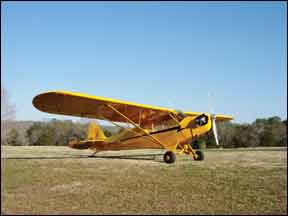
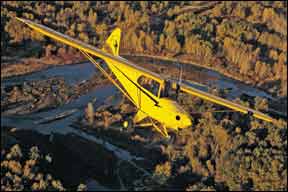
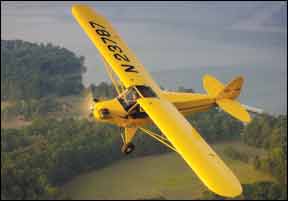
Basic Airframes
Doing the simple math here, adjusting for inflation, the new Cubs are six to seven times the cost of the original Cub and a multiple of four to five over a restored legacy model. What justifies this? Nearly everything, in our view. Other than being yellow-and maybe not even that since you can customize the color scheme-these airplanes are barely in the same universe as the J-3. As a point of reference, the more apt comparison might be to the Super Cub, since these new airplanes are closer to that paradigm. But Super Cubs don’t qualify for LSA; the J-3 does. There is a philosophical point of departure between Legend and Cub Crafters. Legend has exercised more restraint in hewing to the original Cub while improving it at every turn. Cub Crafters approach is more conceptual; it has all but retooled the Cub idea from the ground up.
Both airplanes have the same welded tubular steel frame that Piper used, although the dimensions and construction have more in common with the Super Cub than the J-3. Legend beefed up the overhead structure in the cabin to improve crashworthiness and where Piper gas welded the frame, Legend TIG welds parts that are cut via CNC milling to improve precision. Cub Crafters uses MIG welding. Cub Crafters also points out that its higher price is due in part to adhering to Part 23 standards rather than ASTM standards. On the other hand, LSA standards went the ASTM route to provide less expensive airplanes.
Cub Crafters has made more extensive changes to the basic frame, including re-jiggering the aft longeron and reducing the overall frame parts count to simplify construction. Both the Legend and Sport Cub have improved corrosion proofing and gone is the Cubs spruce spar, replaced by aluminum.
Modern designers would gasp at the original Cubs inclusion of the gas tank inside
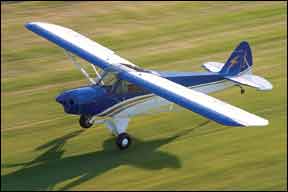
the passenger cabin, so as a safety factor, both new Cubs have the tanks in the wing roots and both carry more fuel than the J-3-24 gallons usable in the Sport Cub, 20 in the Legend.
Where the old Cub had a coat-hanger wire on a cork for a gas gauge, the new ones have sight gauges in the wing roots. The fuel system is left/right/both in both the new Cubs. Its on or off in the old one.
With its closer adherence to the original, the Legend has the same tailfeathers as the J-3 and also the same landing gear dimensions, but in place of the Pipers bungees, Legend has a pair of beefy die springs instead.
These soak up the bounces better and require less maintenance. Legend also stuck with Pipers original jack-screw trim system, but doubled up the cordage to prevent slipping so it works we’ll against air loads. Legend parted company with Piper on the brakes; rather than the old expander tubes, it has Grove disc-type brakes, although in a bow to the original, theyre activated by heel rather than toe pedals.
Cub Crafters took a different tack. It modified the elevator to include a more modern counterweight design and although it has the jackscrew, the Sport Cub has electrically activated trim only. The gear is similar in concept but has a step welded to the front gear leg to help ingress. (The Legend does, too.) Cub Crafters uses Grove brakes, too, but with toe pedals rather than the Legends heel brakes.
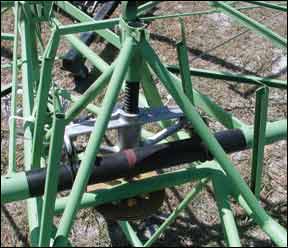
Like the Super Cub, but unlike the Legend, the Sport Cub has flaps-big ones. Theyre manually operated by a ratcheting lever mounted to the wing root on the pilots left side.
Also noticeable-and in keeping with its cutting-edge ethos-is Cub Crafters use of carbon fiber throughout the Sport Cub, molded with a vacuum bagging method. The cowling, interior panels, the cabin floor and other components are carbon fiber, a light and durable solution.
Systems, Engine
To apply the word systems to the J-3 is to overstate the case. If a valve and a bit of tubing is a system, well, ok. The original Cub is tractor-like in its design, with everything made as close to the earth-or shop floor-as possible. Both the Legend and Sport Cub are more sophisticated, obviously.
First, electric systems and starters. Both the Legend and Sport Cub have giant 40-amp alternators to run the electrics and charge a small starting battery. While we like charm as much as the next guy, it wears thin while hand propping a J-3 through the 30th blade on a warm day. Given the choice, we’ll take the starter.
Some J-3s have slipstream generators, but we havent seen many, so if an electrical system is a must, a newer LSA might be the better choice. Further, an electrical system begets radios and transponders, which opens up airspace not available in non-electrical system J-3s with a portable radio.
Perusing the optional equipment list for both the Legend and the Sport Cub, Bill Piper might just be convinced to roll over on his unwavering devotion to cheap. Both companies offer generous choices for panels, ranging from a basic Garmin aera to the top-of-the-line Dynon and Garmin 696 if youre so inclined. The fact that some of these devices are primarily battery powered is a nice plus for backup, in our view.
Both the Legend and Sport Cub are somewhat unique for having Continental O-200s in a segment dominated by the Rotax 912ULS. While the Rotax is undeniably a

more modern engine and has features we like-electronic ignition, mainly-the O-200 is no slouch. We think its more conventional, smoother throttle response makes it more flyable than the Rotax. Cub Crafters offers the O-200-A, while Legend has the O-200-D lightened version. Even with metal or composite props, we found both of these to be exceptionally smooth runners.
Flying Them
Yes, the new-age Cubs depart substantially from the original in design and construction, but do they fly the same? No, they don’t. Not quite night and day, but maybe dusk to noon.
First, egress and creature comfort. With its larger wheels, the Sport Cub is higher than the J-3, but easier to get into, thanks to the step and higher seats. And, oh, those seats, especially the front. Both the Legend and Sport Cub can be soloed from either seat and this is a huge plus. The front seat in a J-3 is a rack, with little leg room, the gas tank banging against your knees and no hope of improving the seating position.
Also, the cabins in both the new Cubs are four inches wider than the J-3 and it might as we’ll be four feet given the improved comfort. Further, both of the new Cubs have a proper baggage compartment, not the canvas breadbox found in the original. Soloing from the backseat of a J-3 is like being in a hole, so S-turns during taxi are a must. Not so flying from the front seat of the Legend or S2. You can just see over the top of the cowl and/or peek around the glareshield during taxi, a huge improvement over the J-3. Taxi turns in both the new airplanes are tight and precise, thanks to good brakes, compared to slightly sloppy in the J-3.
While a C-90-powered J-3 would compare more favorably to the Legend and S2, a C-65 doesnt. The additional 35 horsepower in the new airplanes make for a spirited hop off the runway and enough climb rate to actually reach pattern altitude by mid-downwind. In a J-3, you wouldnt bother trying. We did notice that our C-65 J-3 requires less effort to raise the tail, but we flew with a passenger in the rear, which may account for that.
Handling wise, the new Cubs have the same pronounced adverse yaw as the original, so they require deft footwork to keep the ball centered. Both the S2 and Legend feel more precise than our old J-3, probably because theyre new and tightly rigged. We found that the Sport Cubs perceived roll forces were higher than either the J-3 or the Legend and because the stick is shorter, its not quite as comfortable to rest a wrist on a knee while flying. If we had a choice, we would prefer a stick two inches longer. Cub Crafters has heard the complaint and is considering a longer stick.
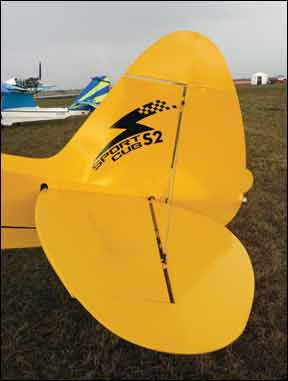
Cockpit visibility from the front of the S2 is excellent, almost like sitting in a fishbowl and better than the J-3. Legend offers two cowl types, a traditional design with the cylinders exposed and a Super Cub-type pressure cowl. Legends Darin Hart told us the pressure cowl design opens up the forward view even more.
The S2 and Legend cruise fast enough to actually go somewhere. We saw about 94 MPH indicated in the S2 at high cruise, burning about 5 to 6 gallons. At 2000 RPM and 4 GPH, we saw about 80 MPH indicated. By comparison, our C-65 J-3 dawdles along at 65 to 70 MPH indicated.
The Legend did a little better, probably due to its ground adjustable prop, also an option on the Sport Cub. We recorded 98 MPH indicated, again on a little more than 5 GPH. But the reality is both airplanes cruise at the same speeds. Both of the Legends doors open and the windows have blast vents, so cabin comfort is excellent. The S2 has a single door, but has vents in the overhead skylight.
Conclusion
In our view, these two aircraft are among the top quality offerings on the LSA market. Not for nothing has the Cub idea endured and its not all nostalgia-these airplanes are both fun and challenging to fly, with none of the quirks of other light sports weve tried. Build quality on both is top drawer, especially Cub Crafters incorporation of carbon fiber. The work is flawless.

Which to choose and why choose one over the original J-3, of which there are many available? The main driver is money, we suspect, given the aforementioned price multiple. Second, if you really want to go anywhere, 65 MPH wont cut it unless you have absolutely no time schedule. Another 30 MPH makes an impossible trip doable.
Between the S2 and the Legend, the two are nearly equal in performance and capability, in our view. The S2s flaps give it a little edge in short field work. On the other hand, the Legend has lighter control forces. They are not equal in price, however. The S2 carries a 23 percent premium over the Legend. What you get for that is some nicer build details, such as milled aluminum fittings where the Legend has steel, beefy rods to interconnect the pedals while the Legend uses traditional cables, the aforementiond flaps and other nice-to-haves, including a convertible rear seat for cargo carrying.
For the traditionalist who wants a safer, faster, updated Cub, the Legend is the value leader, in our view. If budget is less of an issue and you can afford a polished jewel with exceptional detailing, the S2s features make for an uncompromised product for those who prefer the newest technology applied to an old idea. We would he happy with either, frankly.


